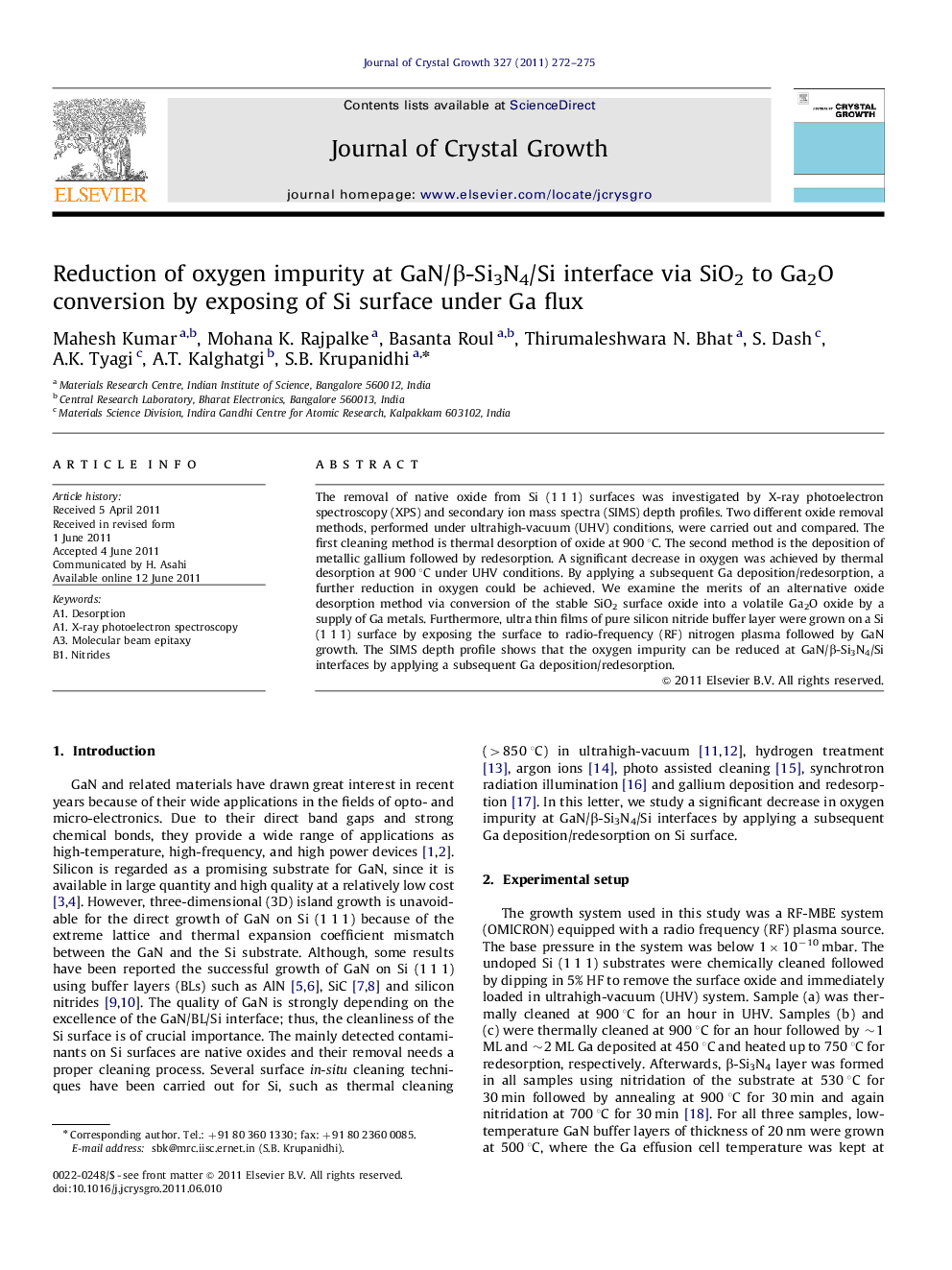| Article ID | Journal | Published Year | Pages | File Type |
|---|---|---|---|---|
| 1792186 | Journal of Crystal Growth | 2011 | 4 Pages |
The removal of native oxide from Si (1 1 1) surfaces was investigated by X-ray photoelectron spectroscopy (XPS) and secondary ion mass spectra (SIMS) depth profiles. Two different oxide removal methods, performed under ultrahigh-vacuum (UHV) conditions, were carried out and compared. The first cleaning method is thermal desorption of oxide at 900 °C. The second method is the deposition of metallic gallium followed by redesorption. A significant decrease in oxygen was achieved by thermal desorption at 900 °C under UHV conditions. By applying a subsequent Ga deposition/redesorption, a further reduction in oxygen could be achieved. We examine the merits of an alternative oxide desorption method via conversion of the stable SiO2 surface oxide into a volatile Ga2O oxide by a supply of Ga metals. Furthermore, ultra thin films of pure silicon nitride buffer layer were grown on a Si (1 1 1) surface by exposing the surface to radio-frequency (RF) nitrogen plasma followed by GaN growth. The SIMS depth profile shows that the oxygen impurity can be reduced at GaN/β-Si3N4/Si interfaces by applying a subsequent Ga deposition/redesorption.
► The removal of native oxide from Si (1 1 1) surfaces was investigated by XPS and SIMS depth profiles. ► Two different oxide removal methods, performed under ultrahigh-vacuum (UHV) conditions, were carried out and compared. ► By applying a subsequent Ga deposition/redesorption, a reduction in oxygen could be achieved. ► We examine the merits of an alternative oxide desorption method via conversion of the stable SiO2 surface oxide into a volatile Ga2O oxide by a supply of Ga metals. ► The SIMS depth profile shows that the oxygen impurity can be reduced at GaN/β-Si3N4/Si interfaces by applying a subsequent Ga deposition/redesorption.
